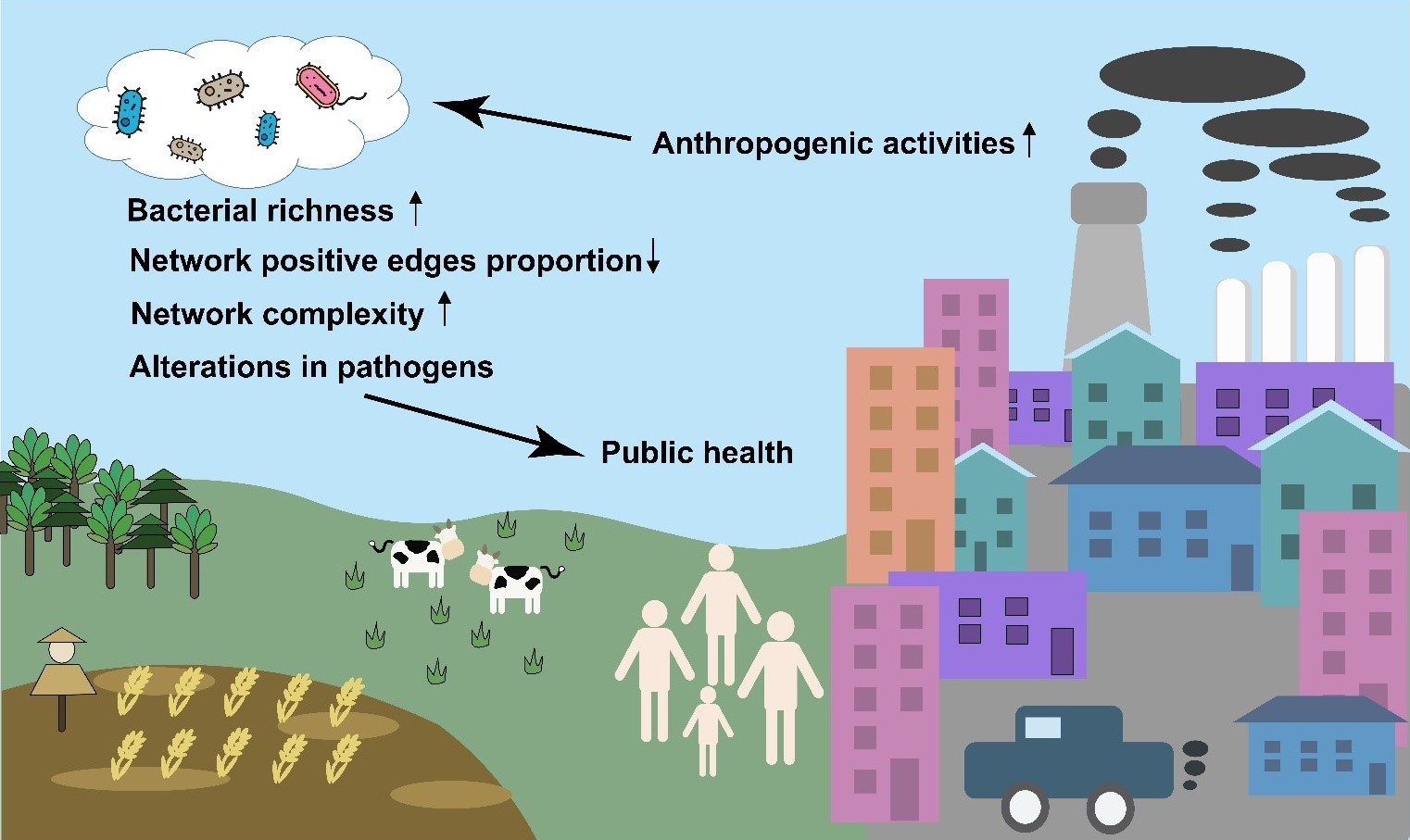Xiaoqing Jiang,Chunhui Wang,Jinyuan Guo,Jiaheng Hou,Xiao Guo,Haoyu Zhang,Jie Tan,Mo Li,Xin Li, and Huaiqiu Zhu*
Abstract: Airborne microbiome alterations, an emerging global health concern, have been linked to anthropogenic activities in numerous studies. However, these studies have not reached a consensus. To reveal general trends, we conducted a meta-analysis using 3226 air samples from 42 studies, including 29 samples of our own. We found that samples in anthropogenic activity-related categories showed increased microbial diversity, increased relative abundance of pathogens, increased co-occurrence network complexity, and decreased positive edge proportions in the network compared with the natural environment category. Most of the above conclusions were confirmed using the samples we collected in a particular period with restricted anthropogenic activities. Additionally, unlike most previous studies, we used 15 human-production process factors to quantitatively describe anthropogenic activities. We found that microbial richness was positively correlated with fine particulate matter concentration, NH3 emissions, and agricultural land proportion and negatively correlated with the gross domestic product per capita. Airborne pathogens showed preferences for different factors, indicating potential health implications. SourceTracker analysis showed that the human body surface was a more likely source of airborne pathogens than other environments. Our results advance the understanding of relationships between anthropogenic activities and airborne bacteria and highlight the role of airborne pathogens in public health.
https://pubs.acs.org/doi/10.1021/acs.est.1c07923#

